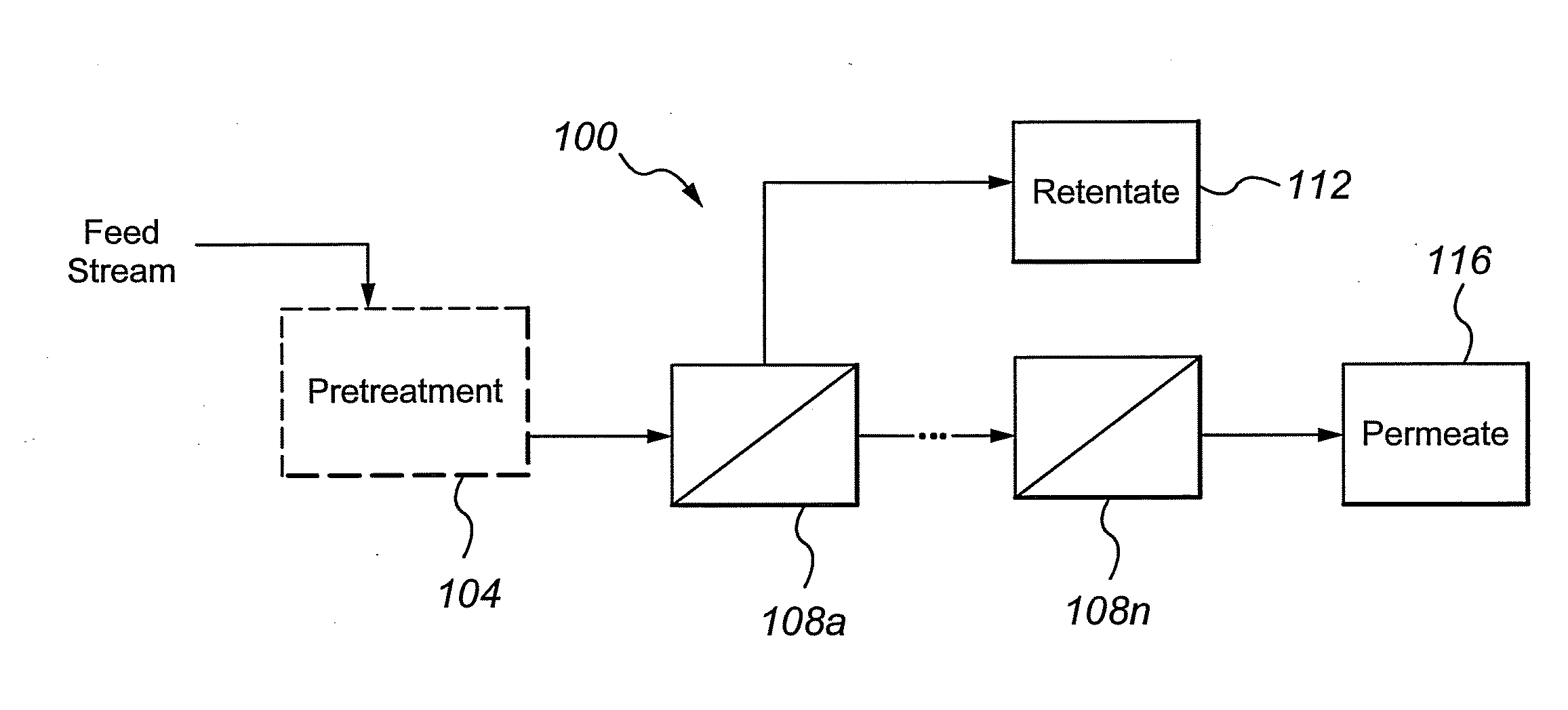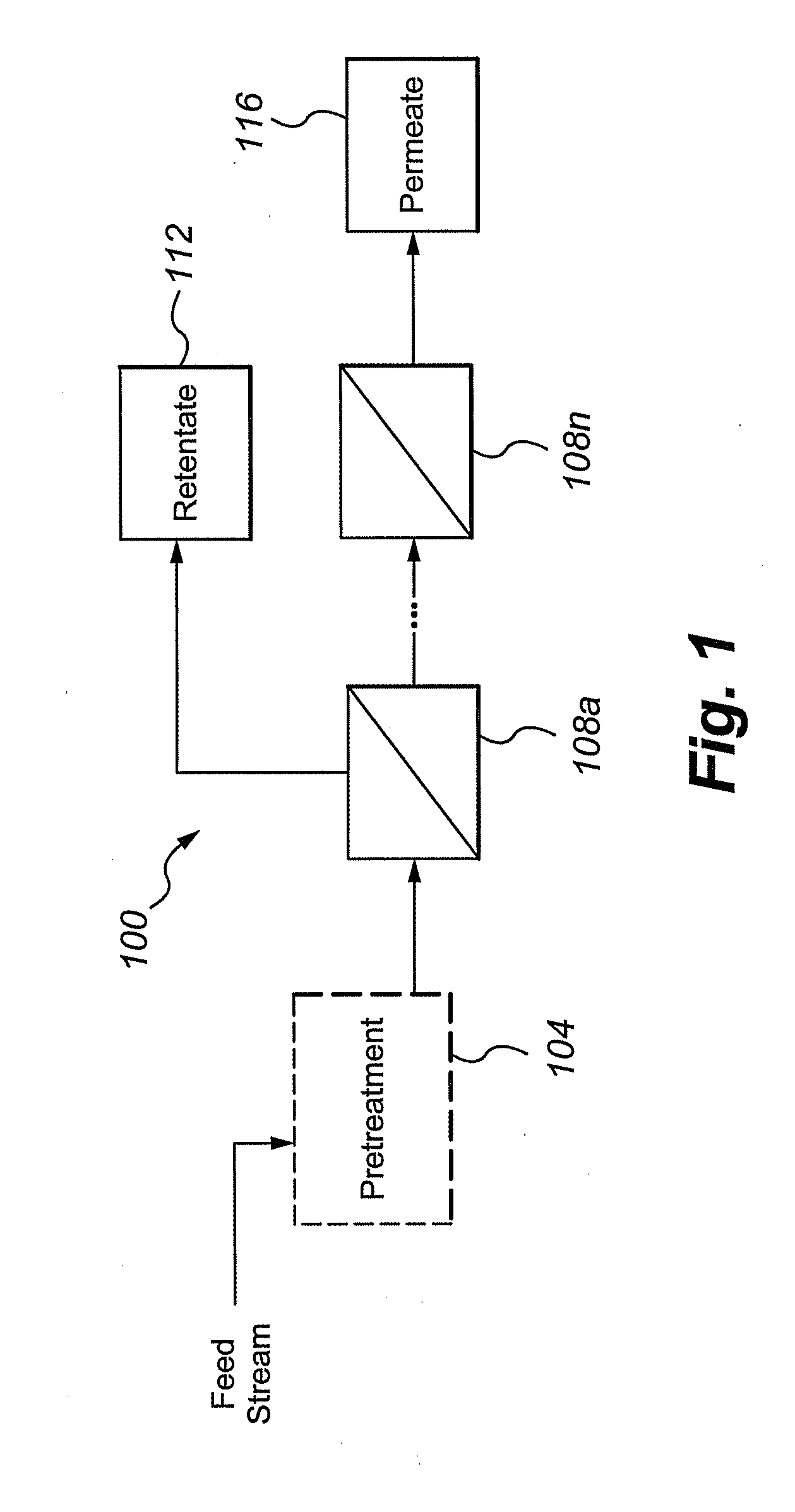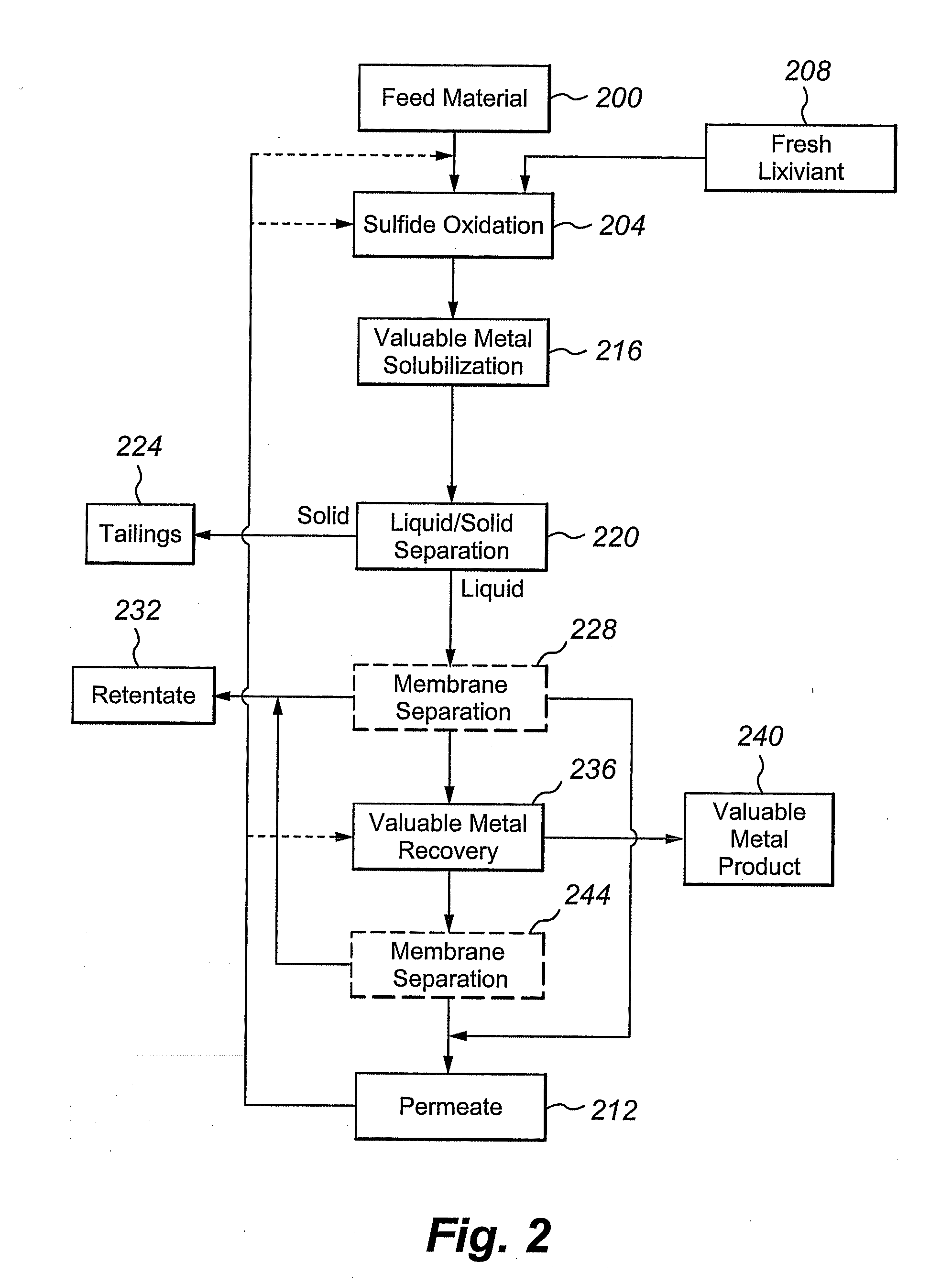Multivalent iron ion separation in metal recovery circuits
a metal recovery circuit and multi-valent technology, applied in the direction of separation processes, iron compounds, solvent extraction, etc., can solve the problems of increasing electrical consumption costs in valuable metal recovery steps, creating problems. , to achieve the effect of reducing the operating pressure of the membrane system, reducing the electrical consumption cost, and high sulfur oxidation ra
- Summary
- Abstract
- Description
- Claims
- Application Information
AI Technical Summary
Benefits of technology
Problems solved by technology
Method used
Image
Examples
example 1
[0078] In order to test the efficacy of the membrane separation system utilized with at least one embodiment of at least one of the present inventions with respect to the selective retention of ferric (or trivalent iron) and ferric iron-containing compounds in the retentate and with respect to the passing of ferrous (or divalent iron) and ferrous iron-containing compounds in the permeate, a test run of the membrane separation system was performed as shown in FIG. 4. A 10 liter test solution of an acid mine drainage solution obtained from the Phelps Dodge Corporation (Phoenix, Ariz.) containing a total iron concentration of 2,720 parts per million (ppm), of which 2,671 ppm were ferric species and 49 ppm were ferrous species, at a pH of 2.0 was placed into a 10 liter feed tank and fed into the membrane separation system at a pressure of about 290 pounds per square inch (PSI). The test solution was passed through a GH1812CJL Nanofiltration Membrane (HW Process Technologies, Inc.) that ...
example 2
[0081] In order to test the efficacy of the nanofiltration membranes utilized with at least one embodiment of at least one of the present inventions with respect to the selective removal of iron, ferric and / or ferrous species from a solution containing valuable metals, two test experiments were run. In the first experiment, a test solution containing 38 g / L copper, 1.14 g / L iron, and 0.6 g / L cobalt at low pH was passed through a G-8 Nanofiltration Membrane (HW Process Technologies, Inc.) with a 700 dalton molecular weight cutoff at a flow rate of 63 gallons per minute. In the second experiment, the same test solution (containing 38 g / L copper, 1.14 g / L iron, and 0.6 g / L cobalt at low pH) was passed through a GH Nanofiltration Membrane (HW Process Technologies, Inc.) with a 700 dalton molecular weight cutoff at a flow rate of 63 gallons per minute.
[0082] The results of the first experiment are shown in FIG. 5. After filtration with the G-8 Nanofiltration Membrane, the permeate and t...
example 3
[0084] In order to test whether a nanofiltration membrane utilized in accordance with at least one embodiment of at least one of the present inventions is capable of preventing a bonding agent (an element that forms a stable dissolved compound with ferric ion species) from passing, thereby retaining the bonding agent in the retentate, two test experiments were run. In the first experiment, an untreated effluent feed sample containing oil, grease, and several dissolved solutes that generated a total chemical oxygen demand (COD) of 600 ppm was obtained from Company #1 and passed through a nanofiltration membrane. In the second experiment, an untreated effluent feed sample containing oil, grease, ethylene-diaminetetraacetic acid (EDTA), copper, lead, nickel and zinc was obtained from Company #2 and passed through a nanofiltration membrane. The results are shown in FIG. 8. The sample from Company #2 was particularly useful as EDTA is a commonly known chelating agent and is thus capable ...
PUM
| Property | Measurement | Unit |
|---|---|---|
| Fraction | aaaaa | aaaaa |
| Fraction | aaaaa | aaaaa |
Abstract
Description
Claims
Application Information
 Login to View More
Login to View More - R&D
- Intellectual Property
- Life Sciences
- Materials
- Tech Scout
- Unparalleled Data Quality
- Higher Quality Content
- 60% Fewer Hallucinations
Browse by: Latest US Patents, China's latest patents, Technical Efficacy Thesaurus, Application Domain, Technology Topic, Popular Technical Reports.
© 2025 PatSnap. All rights reserved.Legal|Privacy policy|Modern Slavery Act Transparency Statement|Sitemap|About US| Contact US: help@patsnap.com



